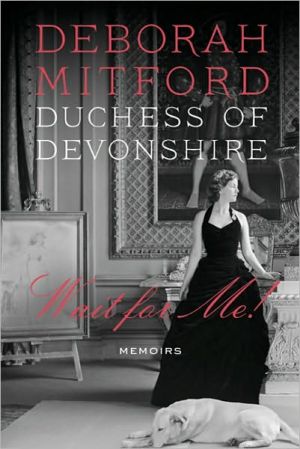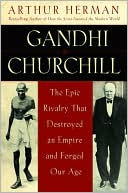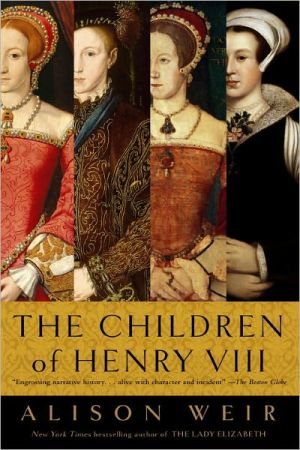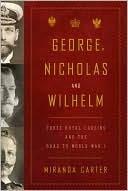Mary Tudor: Princess, Bastard, Queen
She was the first woman to inherit the throne of England, a key player in one of Britain’s stormiest eras, and a leader whose unwavering faith and swift retribution earned her the nickname “Bloody Mary.” Now, in this impassioned and absorbing debut, historian Anna Whitelock offers a modern perspective on Mary Tudor and sets the record straight once and for all on one of history’s most compelling and maligned rulers.\ \ Though often overshadowed by her long-reigning sister,...
Search in google:
She was the first woman to inherit the throne of England, a key player in one of Britain’s stormiest eras, and a leader whose unwavering faith and swift retribution earned her the nickname “Bloody Mary.” Now, in this impassioned and absorbing debut, historian Anna Whitelock offers a modern perspective on Mary Tudor and sets the record straight once and for all on one of history’s most compelling and maligned rulers. Though often overshadowed by her long-reigning sister, Elizabeth I, Mary lived a life full of defiance, despair, and triumph. Born the daughter of the notorious King Henry VIII and the Spanish Katherine of Aragon, young Mary was a princess in every sense of the word—schooled in regal customs, educated by the best scholars, coveted by European royalty, and betrothed before she had reached the age of three. Yet in a decade’s time, in the wake of King Henry’s break with the pope, she was declared a bastard, disinherited, and demoted from “princess” to “lady.” Ever her deeply devout mother’s daughter, Mary refused to accept her new status or to recognize Henry’s new wife, Anne Boleyn, as queen. The fallout with her father and his counselors nearly destroyed the teenage Mary, who faced imprisonment and even death. It would be an outright battle for Mary to work herself back into the king’s favor, claim her rightful place in the Tudor line, and ultimately become queen of England, but her coronation would not end her struggles. She flouted the opposition and married Philip of Spain, sought to restore Catholicism to the nation, and fiercely punished the resistance. But beneath her brave and regal exterior was a dependent woman prone to anxiety, whose private traumas of phantom pregnancies, debilitating illnesses, and unrequited love played out in the public glare of the fickle court. Anna Whitelock, an acclaimed young British historian, chronicles this unique woman’s life from her beginnings as a heralded princess to her rivalry with her sister to her ascent as ruler. In brilliant detail, Whitelock reveals that Mary Tudor was not the weak-willed failure as so often rendered by traditional narratives but a complex figure of immense courage, determination, and humanity. The Washington Post - Christopher Schoppa Whitelock sets the record on Mary straight with flair and grace.
Mary Tudor\ Princess, Bastard, Queen \ \ By Anna Whitelock \ Random House\ Copyright © 2010 Anna Whitelock\ All right reserved.\ ISBN: 9781400066094 \ \ \ Chapter One\ \ PRINCESS OF ENGLAND\ \ \ \ Mary, the daughter of king henry viii and katherine of Aragon, was born at four in the morning of Monday, February 18, 1516, at Placentia, the royal palace at Greenwich, on the banks of the Thames River in London. Three days later, the nobility of England gathered at the royal apartments to form a guard of honor as the baby emerged from the queen's chamber in the arms of Katherine's devoted friend and lady-in-waiting, Elizabeth Howard, countess of Surrey. Beneath a gold canopy held aloft by four knights of the realm, the infant was carried to the nearby Church of the Observant Friars.1 It was the day of Mary's baptism, her first rite of passage as a royal princess.\ \ The procession of gentlemen, ladies, earls, and bishops paused at the door of the church, where, in a small arras-covered wooden archway, Mary was greeted by her godparents, blessed, and named after her aunt, Henry's favorite sister. The parade then filed two by two into the church, which had been specially adorned for the occasion.\ \ Jewel-encrusted needlework hung from the walls; a font, brought from the priory of Christchurch Canterbury and used only for royal christenings, had been set on a raised and carpeted octagonal stage, with the accoutrements for the christening--basin, tapers, salt, and chrism--laid out on the high altar.2 After prayers were said and promises made, Mary was plunged three times into the font water, anointed with the holy oil, dried, and swaddled in her baptismal robe. As Te Deums were sung, she was taken up to the high altar and confirmed under the sponsorship of Margaret Pole, countess of Salisbury.3 Finally, with the rites concluded, her title was proclaimed to the sound of the heralds' trumpets:\ \ God send and give long life and long unto the right high, right noble and excellent Princess Mary, Princess of England and daughter of our most dread sovereign lord the King's Highness.4 Despite the magnificent ceremony, the celebrations were muted. This was not the longed-for male heir, but a girl.\ \ Six years earlier, in the Church of the Observant Friars, Henry had married his Spanish bride, Katherine of Aragon. Within weeks of the wedding, Katherine was pregnant and Henry wrote joyfully to his father-in-law, Ferdinand of Aragon, proclaiming the news: "Your daughter, her Serene Highness the Queen, our dearest consort, has conceived in her womb a living child and is right heavy therewith."5 Three months later, as England awaited the birth of its heir, Katherine miscarried. Yet the news was not made public, and with her belly still swollen, most likely with an infection, she was persuaded by her physician that she "remained pregnant of another child."6 A warrant was issued for the refurbishment of the royal nursery, and in March 1511 she withdrew to her apartments in advance of the birth.7\ \ For weeks the court waited for news of the delivery, but labor did not come. As Katherine's confessor, Fray Diego, reported, "it has pleased our Lord to be her physician in such a way that the swelling decreased."8 There was no baby.\ \ Luiz Caroz, the new Spanish ambassador, angrily condemned those who had maintained "that a menstruating woman was pregnant" and had made her "withdraw publicly for her delivery."9 Many councillors now feared that the queen was "incapable of conceiving."10 Fearing her father's displeasure, Katherine wrote to Ferdinand in late May, four months after the event, claiming that only "some days before" she had miscarried a daughter and failing to mention the subsequent false pregnancy. Do "not be angry," she begged him, "for it has been the will of God."11\ \ Hope soon revived, and while writing letters of deceit to her father, Katherine discovered she was pregnant once more.12 Seven months later, on the morning of New Year's Day, bells rang out the news of the safe delivery of a royal baby. It was a living child and a son; England had its male heir. Celebrations engulfed the court and country, and five days later the child was christened and proclaimed "Prince Henry, first son of our sovereign lord, King Henry VIII." The king rode to the Shrine of Our Lady at Walsingham in Norfolk to give thanks and hold a splendid joust in his son's honor. But the celebrations were short-lived. Three weeks later Prince Henry died. It did not augur well. Over the next seven years, failed pregnancy followed failed pregnancy, each ending in miscarriage, stillbirth, or infant death.\ \ So when in the spring of 1515 the thirty-one-year-old queen fell pregnant for the seventh time, there was a somewhat subdued response. This pregnancy, however, followed its natural course, and in the early weeks of the New Year the royal couple moved to the royal palace at Greenwich, where Henry had been born twenty-four years before and where preparations were now under way for the queen's confinement.\ \ The Royal Book, the fifteenth-century book of court etiquette for all such royal events drawn up by Margaret Beaufort, Henry VIII's grandmother, outlined the necessary arrangements. The queen's chamber was to be turned into a tapestried cocoon, the floor covered with thickly laid carpet; the walls, ceiling, and windows hung with rich arras and one window left loosely covered to allow in air and light. The wall tapestries, the queen's canopied bed, and the bed hangings were to be of simple design, with figurative images avoided for fear of provoking dreams that might disturb mother and child.\ \ There was to be a cupboard stacked with gold and silver plate to signify the queen's status, and crucifixes, candlesticks, images, and relics placed on an altar before which she could pray. At the foot of her canopied bed was placed a daybed, covered with a quilt of crimson satin and embroidered with the king and queen's arms, where the birth would take place.13\ \ In late January, with all made ready, Katherine began the ceremony of "taking her chamber." First she went to the Chapel Royal to hear Mass; then, returning to the Presence Chamber, she sat beneath her cloth of estate--the mark of her rank--and took wines and spices with members of the court. Lord Mountjoy, her chamberlain, called on everyone to pray that "God would give her the good hour"—safe delivery--and the queen was accompanied to the door of her bedchamber in solemn procession. There the men departed, and Katherine entered the exclusively female world of childbirth. As The Royal Book stipulated, "All the ladies and gentlewomen to go in with her, and no man after to come in to the chamber save women, and women to be inside."14 She would not be in male company again until her "churching," the purification after labor, thirty days after the birth. Officers, butlers, and other servants would bring all manner of things to the chamber door, but there the women would receive them.\ \ After days of seclusion and hushed expectancy, the February dawn was broken with bells ringing in the news: the queen had delivered a healthy baby, but a girl. Writing two days later, Sebastian Giustiniani, the Venetian ambassador, assured the doge and Senate that he would offer their congratulations but added that, had the baby been a son, "[he] should have already done so, as in that case, it would not have been fit to delay the compliment."15 Eventually, the ambassador sought an audience with King Henry and congratulated him "on the birth of his daughter, and on the wellbeing of her most serene mother Queen." The state would have been "yet more pleased," he added, "had the child been a son." Henry remained optimistic. "We are both young," he insisted; "if it was a daughter this time, by the grace of God, sons will follow."16 \ \ Continues... \ \ \ \ Excerpted from Mary Tudor by Anna Whitelock Copyright © 2010 by Anna Whitelock. Excerpted by permission.\ All rights reserved. No part of this excerpt may be reproduced or reprinted without permission in writing from the publisher.\ Excerpts are provided by Dial-A-Book Inc. solely for the personal use of visitors to this web site. \ \
Mary Tudor's Family TreeAuthor's NoteIntroduction: ResurrectionPART ONE A King's DaughterChapter 1 Princess of England 3Chapter 2 A True Friendship and Alliance 7Chapter 3 Are You the Dauphin of France? 13Chapter 4 A Very Fine Young Cousin Indeed 16Chapter 5 The Institution of a Christian Woman 21Chapter 6 Great Signs and Tokens of Love 25Chapter 7 Princess of Wales 28Chapter 8 Pearl of the World 33Chapter 9 This Sheer Calamity 36Chapter 10 The King's Great Matter 43Chapter 11 The Scandal of Christendom 48Chapter 12 The Lady Mary 53Chapter 13 Spanish Blood 58Chapter 14 High Traitors 61Chapter 15 Worse Than a Lion 65Chapter 16 Suspicion of Poison 71Chapter 17 The Ruin Of the Concubine 76Chapter 18 Most Humble and Obedient Daughter 83Chapter 19 Incredible Rejoicing 91Chapter 20 Deliverance of a Goodly Prince 96Chapter 21 The Most Unhappy Lady in Christendom 100Chapter 22 For Fear of Making a Ruffle in the World 106Chapter 23 More a Friend Than a Stepmother 117Chapter 24 The Family of Henry VIII 117Chapter 25 Departed This Life 122PART TWO A King's SisterChapter 26 The King is Dead, Long Live the King 131Chapter 27 Fantasy and New Fangleness 137Chapter 28 Advice to Be Conformable 143Chapter 29 The Most Unstable Man in England 148Chapter 30 What Say You, Mr Ambassador? 152Chapter 31 An Unnatural Example 157Chapter 32 Naughty Opinion 162Chapter 33 Matters Touching My Soul 166Chapter 34 My Device for the Succession 170Chapter 35 Friends in the Briars 176Chapter 36 True Owner of the Crown 179PART THREE A QueenChapter 37 Marye the Quene 187Chapter 38 The Joy of the People 191Chapter 39 Clemency and Moderation 197Chapter 40 Old Customs 204Chapter 41 God Save Queen Mary 209Chapter 42 Iniquitous Laws 212Chapter 43 A Marrying Humor 217Chapter 44 A Suitable Partner in Love 223Chapter 45 A Traitorous Conspiracy 228Chapter 46 Gibbets and Hanged Men 236Chapter 47 Sole Queen 243Chapter 48 Good Night, My Lords all 248PART FOUR A King's WifeChapter 49 With this Ring I Thee Wed 255Chapter 50 Mutual Satisfaction 258Chapter 51 The Happiest Couple in the World 262Chapter 52 To Reconcile, not to Condemn 268Chapter 53 The Queen is With Child 273Chapter 54 Her Majesty's Belly 277Chapter 55 Blood and Fire 282Chapter 56 Extraordinarily in Love 288Chapter 57 Committed to the Flames 293Chapter 58 A Great and Rare Example of Goodness 298Chapter 59 Stout and Devilish Hearts 301Chapter 60 Obedient Subject and Humble Sister 307Chapter 61 A Warmed Over Honeymoon 311Chapter 62 A Public Enemy to Ourselves 315Chapter 63 The Grief of the Most Serene Queen 319Chapter 64 Readiness for Change 323Chapter 65 Thinking Myself to Be With Child 326Chapter 66 Reasonable Regret for her Death 329Epilogue: Veritas Temporis Filia 334Acknowledgments 341Notes 343Select Bibliography 375Index 385Illustration Credits 401
\ Publishers WeeklyWhitelock seeks to rehabilitate Henry VIII's daughter Bloody Mary (1516-1558), "one of the most reviled women in English history," and to establish her as "a political pioneer who redefined the English monarchy." University of London history lecturer Whitelock asserts that Mary Tudor's relationship with her defiant, courageous mother, Katherine of Aragon, was crucial. Mary fought hard for her crown in the only successful revolt against central government in 16th-century England. And a year later, as rebels threatened London, Mary refused to flee, rallying Londoners to her defense. A hardworking queen closely involved in policy making, Mary demonstrated that a female monarch could conduct ceremonies, such as healing rituals, performed previously only by a divinely appointed king. Several elements continue to defy Whitelock's attempts to burnish her memory: the burning alive of Protestants by the Catholic queen's orders, her phantom pregnancies, and her submission to the will of her husband, Philip II of Spain, which led England into an unpopular war with France. Readers may wish for a more detailed account of the day-to-day workings of Mary's reign in addition to her personal travails. Still, this is a perceptive portrait of a zealous queen and the larger-than-life parents and tumultuous times that shaped her. 8 pages of color photos. (Sept.)\ \ \ \ \ Kirkus ReviewsAnother dogged attempt to rehabilitate Bloody Mary. Whitelock (Early Modern History/Univ. of London) does a fine job fleshing out this complex character who was destined for greatness-as the first-born of Henry VIII-yet doomed by the religious schism of the era to become "the queen of regrets." From an early age, Mary Tudor (1516-1558) was shamelessly used as a pawn in European politics by her father, betrothed alternately to the French then Spanish throne and fixed as Henry's heir then disinherited with his marriage to Anne Boleyn. Eventually Mary was cast out by her beloved father for her refusal to repudiate her mother, Katherine of Aragon, and her Catholic religion, and she was put under house arrest. However, under the threat of death, she was forced to sign "Lady Mary's Submission" acknowledging her illegitimate status and Henry as supreme head of the Church of England. Her staunchly Protestant brother Edward VI's suspicion that Mary would "provoke great disturbances after I have left this life" came swiftly to pass after his untimely death and her rocky accession to the throne in 1553. Catholic rituals were restored, Protestants and other rebels were thrown on the pyre or imprisoned, an unpopular marriage to Philip of Spain was concluded and the country was essentially torn apart. Elizabeth I had witnessed Mary's courage and defiance as Britain's first "warrior queen," and surely marveled at her intelligence, education and ability to run government affairs. Yet Elizabeth prudently forged another way, cautious in all things, keen to popular sentiment, wary of the foreign entanglements that had ensnared her sister and, above all, eschewing marriage to a husband whose power could undermine her own. Whitelock provides a lively, well-structured treatment of this major figure of British history. Apparently books about British royalty never go out of style, even for American readers, and this is a decent addition to the genre. Agent: Emma Parry/C. Fletcher & Company\ \ \ Christopher SchoppaWhitelock sets the record on Mary straight with flair and grace.\ —The Washington Post\ \








